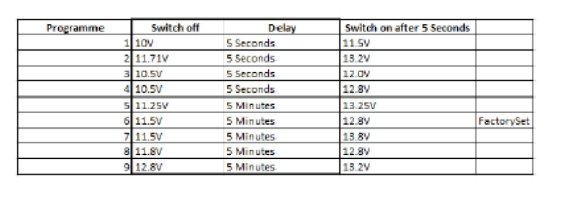For D+ see this thread, short answer just pick up an ignition live from the dash fusebox
Well, while the flooring is up as I'm currently sound deadening the cab, I'm running new cabling to replace the Factory Relay Aux charger and the DC-DC charger asks for a D+ connection, instead of a ingintion live, so it can't drain the main battery. I'm assuming this is off the back of the...

www.t6forum.com
Many DC-DC do not require an ignition feed by the way, they can normally detect engine running from monitoring the voltage.
Again if you add pictures there are a bunch of folks that can offer advice around.
If you've disconnected the feed into the relay I hope you made it safe and removed fuses so it's not live!
If you find you are getting good solar performance there is no harm in trying to trickle charge the starter, but I would advise not connecting with the relay in place.
Using the van radio by the way uses a large amount of power as all the van electrics are powered up as well, better off getting a small radio/Bluetooth speaker if you do that regularly. Some folks fit a basic car stereo in the rear powered from the LB.
For an interim solution there are a couple of things you could try.
First you could try setting a different profile in the current relay, number 9 looks a lot kinder. But reading the manual the way those are programmed looks... cumbersome, it does use things you already have though.
Second you could fit a
Durite Dual VSR. They are still a poor choice compared to full DC-DC but I suspect will be kinder to your batteries than your current relay. Being Dual it senses voltages on both batteries, so as well as connecting when the alternator is charging will also connect when your LB is well charged from solar and divert some of that charge to your starter. It's important to keep in mind that this is still a poor overall solution, as the supplier states the correct solution is a DC-DC charger.
But, in general, no topping up the leisure charge with solar or the Sargent isn't going to really help.
Everytime the alternator kicks in the relay will connect your (potentially) fully charged leisure battery to the van battery. Assuming they are the same battery type (if they are not you have more issues to consider) then they will equalise and quite a lot of current will flow as charge transfers out of your leisure battery into your van battery. With the combined batteries now likely over 80% charge your smart alternator will disengage and not charge until they are both below that point. So no matter where your leisure battery starts any time you run the engine in a very short time it will be back to 80%. Replacing that 20% is going to take probably 4 hours of solar, 2 hours of EHU.
If you did connect the second channel of your solar controller it will, I think, only provide up to 1amp of charge. That second channel is really only going to be effective if the batteries are truly independent, yours are not. If you charge the van battery up the rising voltage will trigger your relay to engage and connect both batteries until the van battery is drained to the cut off voltage.
You'd be better off looking to replace the relay with a DC-DC charger. Then it would indeed make sense to connect the second trickle charge channel. In your current system I think current is going to be washing back and forth and doing neither battery any favours lifetime wise.


